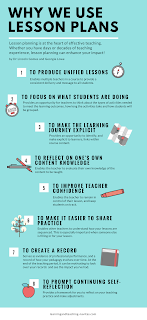My personal belief is the more detailed the learning experience plan the better! They are a lot of work, but they help create the best classroom environments! Plans should be written out in a way that would allow a substitute to walk into the classroom and know exactly what to do.
Let me give you an example. When writing the plan for art on a particular day, a basic plan may simply state, "String Art." As the educator writing the plan, I know what I intend to do for that planned art experience, but what happens if I'm out sick that day? A substitute can interpret string art in several different ways. However, if the plan is detailed, it may read like this:
String Art - children will use different lengths and thicknesses of string as a tool to paint with on 12 x 12 white pieces of paper while listening to music by Enya. Teachers will facilitate the activity by providing the materials, playing the music softly, and asking open ended questions. Questions teachers can ask include, "How does this music make you feel?" "Can you describe the way the string feels in the paint?" Materials: 4 trays of paint (one color per tray), string pre-cut in various sizes, white paper cut into 12 x 12 squares, and smocks. Observe how children manipulate the materials and how they respond to the music. Reflect.
When a plan is detailed, it is much easier to follow!

No comments:
Post a Comment